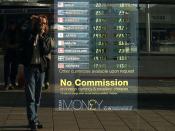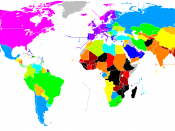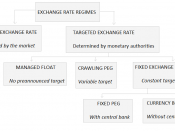The paper is a clear breath of 'dirty' air in the sterile world of perfect foresight. The authors offer a well worked out model of how agents persistently bid the exchange rate away from the expected long-run equilibrium rate. It seems intuitively comfortable to see the mathematical justification for the unexplained excess returns to be a function of the distance from the bench-mark (PPP). The uncertainty of a switch occurring in a regime (the Peso Problem) is an interest-ing form within which to embed the imperfect information. It is a format that seems ready to ex-pand into many other areas of economic modeling in which expectations are at the core of the model's dynamics.
Of course, the choice of the benchmark is key to the mechanics of the process. In this case, PPP is an obvious choice... but, since the idea of PPP drives this model so strongly, it is interesting to look at its place and its characteristics.
In the paper, the authors note that if PPP holds, 'relative excess demand for domestic and foreign goods is zero.' The obvious suggestion, based on the model, is that the flow of goods and services is the foundation for the equilibrating dynamic. Behind the flow of goods and services is the gap between the gap between, domestic and foreign short-term rates, and the steady state long-run interest rate gap that sets goods flows to zero. The assumption is that the prices of the domestic and foreign goods in their respective for-eign currencies are 'incorrect' based on the fundamentals of the respective countries and that agents know this (and know that the exchange rate path is unstable) but cannot be sure of the de-gree of 'incorrectness' or the persistence of the divergence. Embedded into this model are as-sumptions about...


